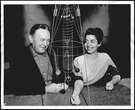Humor doesn’t just sell—it sells well, and that’s no joke.
There are any number of stats to validate it. Research from Oracle indicates that 90% of consumers are more likely to recall a product or brand associated with a humorous treatment, and 72% would choose a brand that uses humor over their competition. Here’s one more: 80% say they’re more likely to buy something again if the brand is funny.
It’s not surprising that the COVID era coincided with a more serious and somber approach to advertising—but the shift away from humor started well before the pandemic. According to Kantar, humor in ads saw a steady decline from the turn of the millennium. In 2022 only 33% of ads could be considered lighthearted; lower still were fully “funny” ads—fewer than 10%.
Fortunately, it appears that the industry has recently rediscovered its funny bone. Three-quarters of U.S. and U.K. winners at the 2024 Cannes Lions Festival of Creativity featured humor. And 70% of spots at the 2024 Super Bowl did the same.
What’s so funny?
What’s driving brands to try to elicit a good chuckle—or at least a smile—from consumers? Undeniably, we live in deeply polarized times. People are at odds over a multitude of social and political issues, and it’s getting harder and harder to find common ground. In such a divisive atmosphere, people are searching for something that unites us. That’s precisely why humor can be effective now more than ever, especially when it builds upon shared experiences.
Of course, “funny” is subjective. What cracks me up, might leave you cold. But strike the right chord, and people will talk about it around the virtual water cooler. While we can disagree about seemingly everything, humor can transcend and unite. Wonderfully, a shared experience of common joy can also extend beyond the moment.
Moreover, people go out of their way to invite others to participate in humorous moments. There’s even a word for it—”pebbling.” Sharing uplifting nuggets of content with friends and family draws parallels with penguin communities, where members of social groups share individual pebbles to strengthen bonds.
So too, are we increasingly pebbling. Forty percent of Gen Z primarily use social media to “find funny or entertaining content”—the same goes for 35% of millennials.
Encourage behavior change
This is how brands marry purpose, preference, and ultimately—profit. Through the uniting force of humor, advertisers can also encourage behavioral change and foster positivity.
Take Hellmann’s “Mayo Cat,” a Siberian feline named Munchkin whose meow sounded suspiciously like, you guessed it, mayo. Given the humorous connection, virality ensued, with Munchkin reaching Kardashian-like heights of fame. Dinner is saved, a star is born.
Did Mayo Cat’s unique “meow” bring an immediate smile to your face, sure. But its effect was even more impactful. Surpassing 30 billion impressions, The brand’s Big Game campaigns yielded a 24.4% rise in #MakeTasteNotWaste conversations on social media.
Bring the funny
Brands realize that a humorous approach needs to do more than elicit a fleeting laugh. It needs to drive sales and enhance the brand’s positioning at the same time. “Bringing the funny” looks like the easiest thing in the world when it’s done right. The reality is, it requires a mix of inspiration, serendipity, and access, delivered by a talented group of individuals who have honed their craft.
Not everyone is a natural comedian. While hosting a panel at the Cannes Lions Festival of Creativity, this was clearly (and somewhat brutally) brought home to me by my team, who—upon reading my planned opener—threatened to abandon me if I dared deliver it.
Fortunately, I was joined by a real comedian and master of comedic art: SNL stalwart Kenan Thompson. He’s the man for whom witty observations roll from the lips as easily as water from a faucet. With a half hour of unfettered access to undiluted comedic genius, I wanted to squeeze as much insight out of him about what makes “funny” funny as possible.
Thompson revealed that eliciting laughter is proof that you’ve connected with someone on a fundamental and human level. You’ve found that oh-so-valuable common ground. It’s about more than just a witty turn of phrase, or moment of slapstick.
Humor, Thompson insisted, must have authenticity, heart, and consistency—much like brands themselves. Whether it’s picking up on the shared disappointment of bland event catering, or the absurdity of razors with blades that are multiplying like Gremlins (remember what happens when you get them wet?), humor is disarming. Thompson referred to it as a brief moment where people drop their guard and allow you to get a little closer.
Like any other device, it’s best not overused. Humor in adland has its place—and that place has the potential to be big—really big. It can stretch from fast food to deodorant, insurance to mayonnaise.
It’s also best employed over time, with consistency of tone and the ability to evolve with the audience and the times. Done well, humor in advertising is art, science and magic trick—all rolled into one. That’s something that will make any brand smile
Jon Cook is global CEO of VML.







No comments